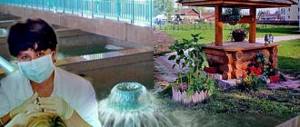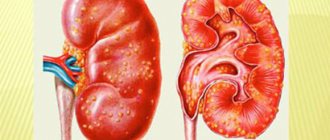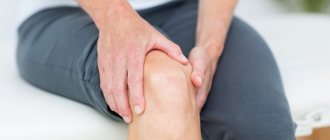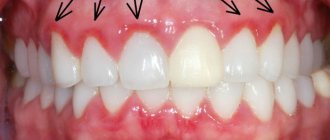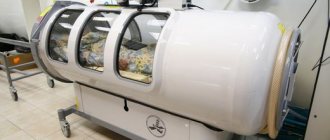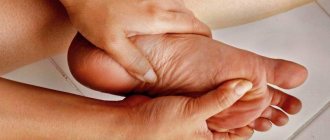Psoriasis is a chronic disease (dermatosis) that affects the skin and its appendages (hair and nails). Characteristic signs are relapses and temporary improvements when symptoms subside. Psoriasis is not infectious in nature, so it does not pose a danger to others. Another name for psoriasis is lichen planus . The disease occurs mainly at the age of 15-45 years. People with fair skin are most often affected. In developed countries, the incidence rate is 2-4%. Consequently, every 25th person on the planet suffers from psoriasis.
Squamous lichen is recognized as a very common pathology of the skin, which is studied by many medical institutions. But this disease has not been fully studied and is officially recognized as incurable. Please note that scaly lichen affects not only the skin. In the absence of timely treatment, it can damage the joints and spinal column, the nervous system, and the immune system.
Psoriasis symptoms and primary signs
The skin disease psoriasis develops gradually. Initially, single papules appear, which have a pink-red tint. They are gradually covered with loose gray or white scales. It should be noted that psoriasis is manifested by a triad of signs: terminal film, pronounced scales and pinpoint bleeding.
Development The disease develops gradually - at first there are few rashes, but over time their number increases. Quite rarely, a generalized and intense course develops. Most often this is observed after infectious diseases, psychological stress and long-term drug therapy. In this case, the rash spreads very quickly throughout the body. Papules are predominantly localized in the area of skin folds.
Psoriasis has the following symptoms of the disease:
- Plaques with a diameter of 1-3 cm;
- Peeling of conglomerates;
- The presence of severe itching.
Blisters and cracks appear on the feet and palms, which are quite painful. Nails begin to peel and become deformed. Dead skin cells flake off, which resembles dandruff. Most often, psoriasis affects the elbows and knees, but the disease can also develop in other parts of the body, even in the scalp.
This is what psoriasis usually looks like on different parts of the body.
Is he contagious or not?
The studies have confirmed the fact that psoriasis is not contagious and is transmitted only hereditarily, developing against the background of infectious, viral and other stressors.
To the question: “Is psoriasis of the scalp and the rest of the skin contagious, the answer can be unequivocal - no!”
It is not contagious and cannot be transmitted:
- Sexually;
- In everyday life, for example, with saliva, by sharing common utensils and something else with a sick person;
- Through a handshake and other skin contact.
It is possible that communicating with a patient with psoriasis is unpleasant for aesthetic or hygienic reasons, but this does not mean that the patient with psoriasis is contagious.
Types of psoriasis
Squamous lichen manifests itself in a variety of forms. The symptoms of the disease depend on the type of psoriasis.
Plaque-like (vulgar, ordinary, simple)
A common form, diagnosed in 80-90% of cases. Accompanied by extensive inflamed areas. The skin turns red and becomes hot, becoming covered with silvery-white thickened skin. If the crust comes off, a bleeding, eroded surface appears underneath it, which is due to the presence of a large number of small vessels on the skin. Gradually the plaques become larger. They combine with each other, forming “paraffin lakes”.
Read more in the article about vulgar psoriasis.
Flexor (inverse psoriasis)
Inflamed spots have a smooth surface with virtually no peeling. Such plaques are located mainly on the skin folds in the groin area, on the back of the elbows and knees. Deterioration occurs quite quickly, this is due to constant friction of the affected areas. Streptococcal and fungal infections often occur.
teardrop-shaped
Accompanied by the appearance of small red or purple nodules. They spread to large areas of the skin and are localized in various areas (hips, lower legs, back, head, neck). Occurs primarily in response to streptococcal pharyngitis or sore throat.
Described in more detail in the article on guttate psoriasis.
Exudative (pustular)
It is a serious form of the disease. Bubbles appear on the skin, containing clear exudate. Such pustules are located on reddened and swollen skin. The upper layers of the epidermis quickly peel off. Due to the large number of inflamed areas, secondary infection occurs, which is fraught with the appearance of purulent contents. A generalized course is possible, which leads to damage to almost the entire skin.
Learn more in the article about pustular psoriasis.
Erythrodermic
Accompanied by damage to large areas of skin. There is an inflammatory process and pronounced peeling. Detachment of the upper layers of the affected skin often occurs. In this case, there is severe itching, swelling and pain. Psoriatic erythroderma can be fatal because it is accompanied by severe inflammation and peeling. At the same time, the skin loses its ability to maintain the body’s temperature regime.
Psoriasis on nails
A skin disease, psoriasis can also affect the nail plates. This form of the disease is called psoriatic onychodystrophy. The appearance of the nails changes: they become brittle and acquire a yellowish color. In the absence of timely treatment, complete loss of nails is possible.
Joints are in danger If lichen planus is not treated, there is a high probability that it will cause damage to the joint structures. Psoriatic arthropathy is characterized by inflammation of cartilage tissue. Most often this occurs in the area of the fingers of the upper and lower extremities. This leads to the progression of dactylitis and spondylitis. The pathological process can lead to disability.
Severe forms of psoriatic arthritis develop in 10-15% of cases and can lead to death, which is associated with immobilization of the patient in bed, which is accompanied by the appearance of pneumonia and bedsores.
Manifestation in children
Most often, psoriasis develops in children between the ages of 4 and 8 years. In children, it often affects the scalp, as well as the facial skin and groin area. The disease usually manifests itself after an infectious disease (sore throat, chickenpox, etc.), stress, or trauma to the skin. In children, psoriasis most often occurs in a drop-shaped form with the appearance of small foci of rash, along with peeling. In children, it also occurs in an exudative form (with icteric sticky scales and weeping tubercles).
Causes of the disease
Descriptions of psoriasis in medical encyclopedias contain information that the causes of its occurrence have not been fully studied. Experts only put forward theories about the development of this disease:
- Autoimmune factor. In the body of every person there are T-helper and T-killer cells, which perform a protective function against bacteria, viruses and malignant processes. In the presence of foreign cells, they produce special substances that trigger inflammation in the body. Inflammatory mediators lead to processes of excessive reproduction of skin cells - proliferation;
- Abnormal keratinocytes. Epithelial cells begin to grow, divide and mature more slowly. In response to the changes occurring, the following process occurs - immune cells T-lymphocytes and macrophages “attack” cellular structures, beginning to destroy them.
Additional factors contribute to the development of psoriasis, including hereditary predisposition and thin, dry skin. People who are exposed to external irritants, such as prolonged contact with household chemicals, alcohol solutions and cosmetics, are more susceptible to developing lichen planus.
People who are overly clean have a tendency. Hygiene products remove the protective barrier, which makes the skin more susceptible to the development of pathological processes. Addiction to alcoholic beverages, drugs and smoking is also a negative factor. This is due to the fact that there is a disruption in the nutrition and blood supply to cellular structures.
Also, people infected with AIDS are susceptible to developing the disease. Scientists have still not been able to explain this phenomenon. The thing is that a predisposing factor for the development of psoriasis is an excessive number of lymphocytes, and HIV contributes to a sharp decrease in the level of these cells in the blood.
Infectious diseases and allergies Factors such as infectious diseases (staphylococcus and fungus), moving to another climate zone, stress and mechanical damage to the skin should not be overlooked. Allergic predisposition is of great importance.
Additional Information
Psoriasis is largely idiosyncratic in nature. It can improve for no apparent reason and, conversely, spontaneously worsen. Studies of various factors associated with the appearance, development or exacerbation of psoriasis are usually based on the study of a small number of, as a rule, inpatient, rather than outpatient, and therefore initially more severe, groups of patients. Therefore, the reliability of these studies, designed to find out what psoriasis is and how it occurs, is often reduced by insufficient representativeness of the sample and the inability to determine cause-and-effect relationships between many factors (including those that are still unknown and unidentified) that can influence the course of psoriasis. Often, different studies have conflicting findings.
However, it has been established for certain that the first signs of psoriasis often occur after stress, skin damage in those places where the rash first appears, and/or streptococcal infection.
According to a number of sources, conditions that can exacerbate psoriasis include infections (acute and chronic), stress, climate and seasonal changes. Certain medications—beta blockers, lithium carbonate, the antidepressants paroxetine and fluoxetine, the antimalarials chloroquine and hydroxychloroquine, and the anticonvulsants valproate and carbamazepine—are, according to some sources, associated with a worsening of the disease or may even trigger the initial onset of psoriasis.
Alcohol abuse, smoking, excess weight and poor diet can aggravate the course of psoriasis, complicate its treatment and provoke exacerbations . Some care products - creams, hand lotions, hair sprays, perfumes, some household chemicals - can also provoke exacerbations of psoriasis.
Stages of psoriasis
A disease such as psoriasis develops gradually and has several stages of progression. For an acute pathological process, this factor is not important. The chronic form of the course is of great importance for the stages of development of scaly lichen.
Please note that treatment for psoriasis is prescribed only after the exact stage of the disease has been determined and the causes of its development have been established. Only after a comprehensive diagnosis can competent drug therapy be prescribed, based on the results of the research.
The main stages of psoriasis:
- The initial stage of psoriasis. It is characterized by the appearance in the affected area (on the skin, joints, scalp) of rounded reddish areas that slightly rise above the rest of the surface. They have clearly defined boundaries and small (from 1 to several cm) sizes. Such rashes are characteristic of ordinary psoriasis. With teardrop, they have the form of small (1-3 mm) red droplets, and with seborrheic, they look like greasy white or yellow scales, reminiscent of dandruff. In other types, primary manifestations may be in the form of small blisters, dry scales, white inflamed crusts (on the mucous membrane), deformation of the nail plates and joints.
- Progressive. Indicates an exacerbation of the disease and is accompanied by the appearance of new papules on the trunk or in the area of the flexor parts of the limbs. The formation of conglomerates during their merger is noted. Such plaques are white in color, located on reddened, inflamed areas of the skin. There are no scales at the edges of the conglomerates, and there is a small hyperemic rim. The Koebner phenomenon occurs (any damage leads to the formation of plaques);
- Stationary. Accompanied by the extinction of the inflammatory process. At this stage, the drugs used for drug therapy are replaced with less intense ones. During this period, there is no appearance of new papules and the growth of existing conglomerates stops. All plaques are covered with a dense layer of scales, the red rim disappears and the Koebner phenomenon is not observed;
- Regressive. We are talking about defeating the inflammatory process. In this case, doctors take measures to record the achieved result. Characteristic signs are the presence of a pseudoatrophic Voronov's rim in the form of light skin folds around the plaques. The peeling gradually fades and may disappear completely, and the conglomerates begin to turn white.
Inflammation underlies all stages of the disease. There is a pattern in the clinical manifestations of the disease: the more pronounced the redness, the stronger the pathological process. After eliminating the inflammation, improvements are noted.
Establishing diagnosis
To prescribe effective treatment for psoriasis, it is necessary to first determine the causes of its occurrence. If they are not eliminated, the disease will continue to recur. To do this, you need to undergo a full examination in a clinical setting.
Among the most effective diagnostic measures for lichen planus, a visual examination and collection of an anamnesis of the disease should be highlighted. Please note that there are no specific measures to detect the disease. A blood test can only show advanced forms of psoriasis. In this case, active inflammation, rheumatic and autoimmune processes will be found. Biochemical and endocrine disturbances are also possible.
Differential diagnosis For differential diagnosis, a skin biopsy is performed. Using this analysis, it is possible to determine the accumulation of T-lymphocytes, thickening of the keratinocyte layer and signs of proliferation of immunocompetent cellular structures. In the epidermal layer, under the plaques, accelerated angiogenesis is observed. Experts pay attention to the presence of pinpoint hemorrhages on the skin. When the flaky crust is scraped off, bleeding appears. This is due to the acceleration of angiogenesis processes, as well as excessive fragility of vascular structures, which is a manifestation of the Auspitz symptom, characteristic of psoriasis.
Therapeutic measures
Treatment tactics for psoriasis are aimed at transferring the disease to a regressive or at least stable state. To do this, each patient is drawn up an individual treatment regimen using medications: external and systemic, immunomodulatory or immunosuppressive. Various types of phototherapy, balneotherapy, and spa therapy can be used as additional treatment methods.
Drug treatment
Drug therapy should be prescribed by a specialist with appropriate qualifications. To begin with, the doctor establishes the nature of the disease, the stage of its progression and the presence of predisposing factors. The condition of the patient's body is of great importance.
Features of drug treatment of psoriasis:
- Local treatment (prescribed as an independent measure or in combination with other methods). Moisturizing ointments and creams ("Ichthyol", "Salicylic"), glucocorticoids ("Prednisolone", "Ftorokort"), herbal-based drugs ("Colchamine ointment", Psoriate"), cytostatic agents ("Methotrexate") are used;
- Systemic therapy (carried out in advanced stages of the disease or when local drugs are insufficiently effective). Monoclonal antibodies (Infliximab), cytotoxic drugs (Fluorouracil) and glucocorticoids (Dexamethasone) are prescribed. It is mandatory to prescribe medications for a complex effect on the body: antihistamines, hepatoprotectors, hormonal ointments and enterosorbents;
- Instrumental techniques (used to increase the effectiveness of medication). Among the most effective measures are ultraviolet irradiation, laser therapy, phototherapy, hemodialysis and plasmapheresis.
Vitamin therapy is mandatory. Rashes can occur due to silicon deficiency, so measures are taken to replenish it. The patient's body begins to be supplied with vitamin D, which is a fairly important element of the skin. This vitamin is necessary during the stationary stage of the disease.
Also, a remedy such as fish oil is prescribed. It is an active antioxidant that restores the body's protective functions and cellular structures, protecting them from death. Lecithin, a phospholipid that is a building material for the skin, is widely used.
Traditional methods of treatment
The use of traditional methods can be effective only after a thorough diagnosis of the disease and study of the causes of the disease. This will help eliminate a possible relapse after getting rid of the painful rashes.
The most popular folk remedies for psoriasis include:
- Tar. The most common is birch; pharmaceutical preparations have been created on its basis: soap, shampoo, ointment. Pure tar is also sold, but has a high content of active substance and requires caution in use.
- Ointment with propolis. Mix boiling butter and crushed propolis in a ratio of 10: 1. The cooled ointment is applied to the wet surface for psoriasis for 2 days.
- Medicinal herbs. Tinctures and decoctions of eleutherococcus, marshmallow, Japanese sophora, Manchurian aralia are used, as well as baths with the addition of infusions of St. John's wort, valerian, sage, string, and celandine.
Folk remedies will be effective with regular and long-term use, gradually increasing the dosage, the absence of negative emotions and when combined with concurrent medications.
Diet
The diet for psoriasis, as in the treatment of most diseases, is part of three main areas of therapy:
- taking medications;
- stabilization of psychological state;
- following a special menu (diet).
In addition to the list and quantity of products, such diets include general principles of food consumption.
The most famous ready-made diets for psoriasis are the Pegano diet and the Fire diet.
The main food groups in both diets include: vegetables and fruits, vegetable oil, sea fish, lean meats, dairy products, nuts, and cereals. It is prohibited to consume fatty foods and sweets, seafood (shrimp, crab meat, etc.), pickles and marinades, tonic and alcoholic drinks, white bread, hypoallergenic foods (strawberries, some citrus fruits, honey, chocolate, etc.).
They give preference to the principles of a healthy diet: increased content of alkali-forming foods, reduced salt consumption, gentle processing methods (boiling, stewing, baking, steaming), product compatibility.
Preventive measures
First of all, you need to remember that you should never self-medicate. This may cause the disease to worsen. A mandatory preventive measure is the exclusion of alcoholic beverages and bad habits. A person suffering from psoriasis should remember that under no circumstances should they scratch their skin.
Diet is of particular importance. If you have psoriasis, you need to eat a balanced diet. You should avoid sweet, spicy and refined foods. It is recommended to include foods rich in vitamins D, A, E and silicon in the menu. If necessary, you can take vitamin and mineral complexes, for example: Hexavit, Decamevit, Undevit.
Prevention measures include the following skin care:
- Timely implementation of water procedures using gentle agents (neutral pH level), sea salt and medicinal plants;
- Refusal of hard washcloths in favor of soft sponges that do not injure the skin;
- Moisturizing (if necessary) with creams and lotions developed based on medicinal plants and natural substances;
- Ensuring a normal level of air humidity in the room using special humidifiers;
- Promptly treat cuts, abrasions and other damage to the skin to prevent infection;
- Avoid direct contact with household chemicals. To carry out wet cleaning and disinfection, you must use rubber gloves;
- Wear loose clothing that prevents chafing of the skin. It is advisable to give preference to natural materials such as linen and cotton.
Psoriasis is a serious disease that cannot be completely cured. Therapy is prescribed to each patient individually in order to relieve the inflammatory process and improve the condition of the skin. Only comprehensive measures can control the course of the disease and prevent the likelihood of complications.
Treatment in Israel
Today, Israeli clinics offer their services in the treatment of diseases such as psoriasis with their best specialists. When treating psoriasis with drugs, Israeli doctors use the most modern and sometimes even innovative means, such as monoclonal antibodies.
The disease in Israel is treated with excellent quality locally produced creams and ointments. Physiotherapy methods (phototherapy, ultrasound therapy, etc.) are also used to treat this disease. Israeli clinics are equipped with the latest equipment to carry out the procedures described above.
Here you can undergo therapeutic procedures at the Dead Sea. Where natural vapors of sea water retain the unnecessary part of solar radiation, and water filled with minerals and mud of a medicinal nature have a literally healing effect on people suffering from psoriasis.
The result is that 90% of patients with psoriasis after treatment in Israel achieve a long, often many-year, remission.


